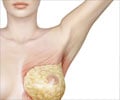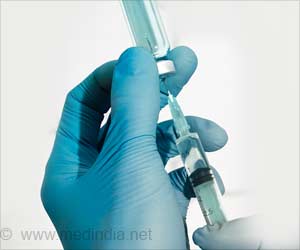Scientists linked with Harvard Medical School claim the discovery of a simpler method to distinguish benign breast tumors from malignant ones.
Scientists linked with Harvard Medical School claim the discovery of a simpler method to distinguish benign breast tumors from malignant ones.
Harvard’s Kumar R. Bhushan, Ph.D., who led the chemistry group that participated in the research, described details of the new technique today at the 233rd national meeting of the American Chemical society, the world’s largest scientific society.When used with a non-invasive imaging method that relies on harmless light instead of X-rays, the contrast agent could help doctors diagnose disease within minutes and determine where biopsies are needed.
“Because this agent is highly selective in targeting the product of malignant tumors, this approach may prove most useful for monitoring women who have dense breast tissue, or those who are at a higher-than-average risk for developing a malignant breast tumor,” Frangioni says.
For screening applications, the new technique most likely would be used to supplement, not replace, mammography, according to Frangioni. But the two methods used together, he says, may potentially catch more cancers than mammography alone.
Mammography is still considered the “gold standard” for early detection of breast cancer, but the method often gives false positives, requiring additional screenings and painful biopsies for patients. In addition, studies show that traditional mammograms may miss 10 percent to 20 percent of breast cancers, especially if the tumor is buried in dense tissue.
About half of women under 50 and a third of older women have naturally dense breast tissue, making it harder to distinguish between healthy tissue and questionable masses in mammograms, Frangioni says.
Advertisement
“By homing in on hydroxyapatite, we can target these malignant cells with a high degree of specificity, and that has the potential to improve the patient’s outcome,” Frangioni says.
Advertisement
The agent also may be used during surgery to pinpoint the location of hydroxyapatite, and therefore the breast cancer cells themselves, Frangioni notes.
His group began working to develop agents to target hydroxyapatite six years ago, but efforts were stalled by the inability to manufacture large quantities of the agent. “It was a chemical catch–22,” he says. “Bisphosphonates are insoluble in anything but water, but to prepare large quantities of the substance for our studies, we need to perform the reaction in the absence of water.”
Future studies will focus on translating the new compound to the clinic for human testing. It will likely be a few years before the compound is ready for use in human trials, according to Frangioni.
Source-Eurekalert
ANN











